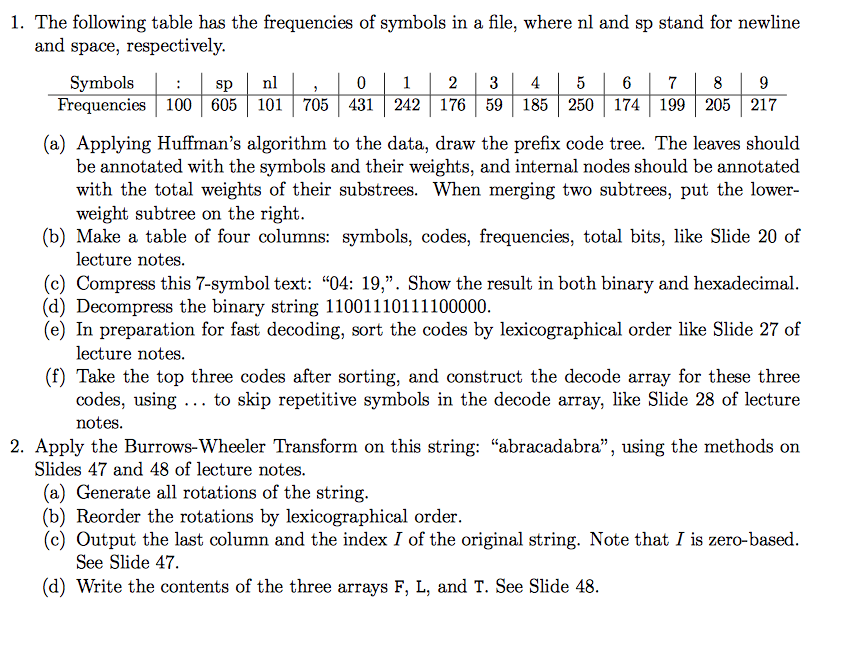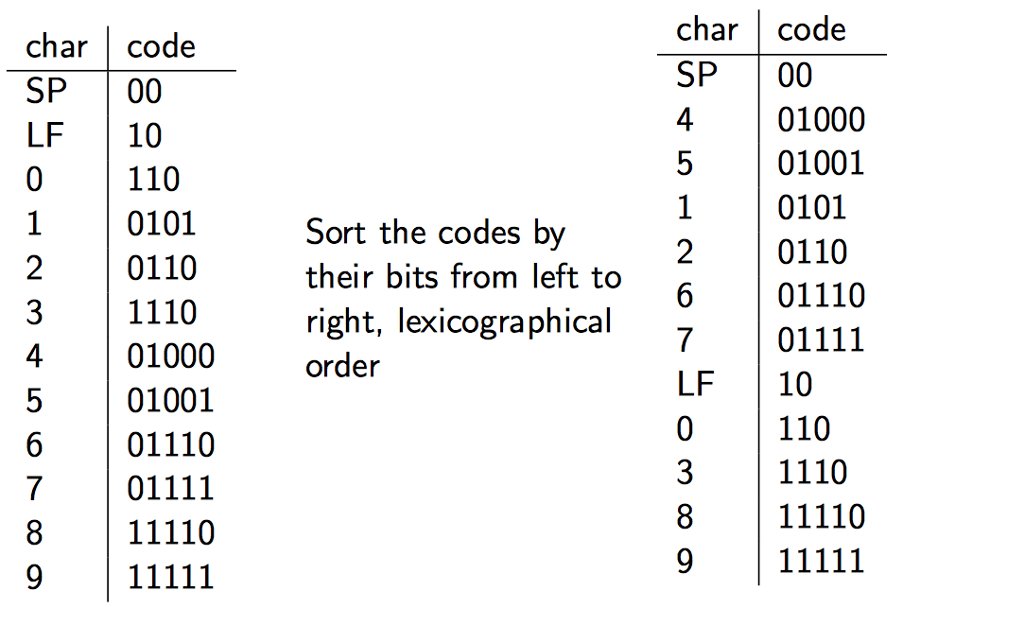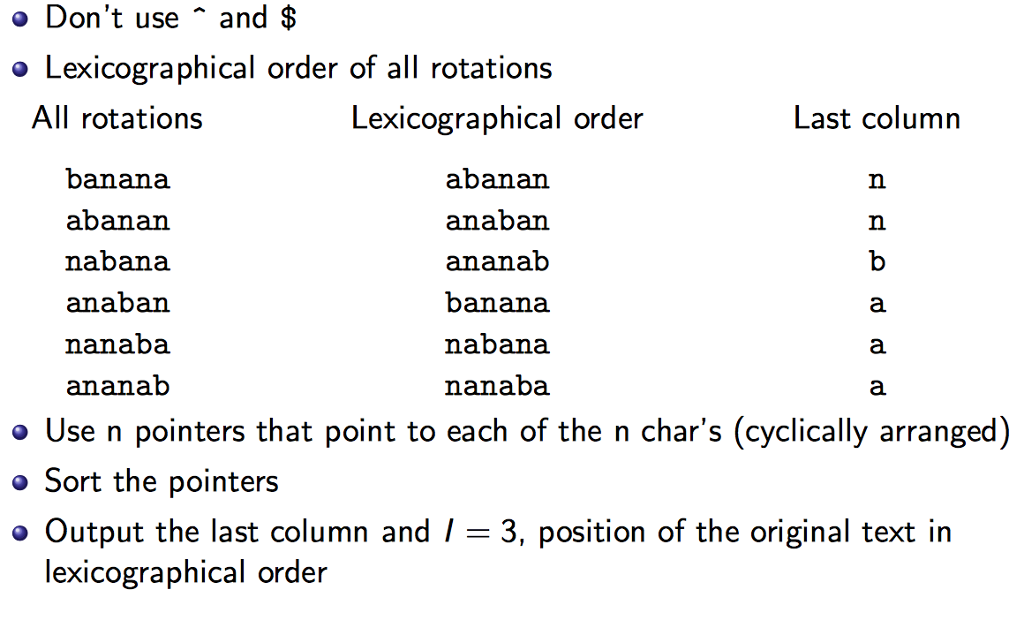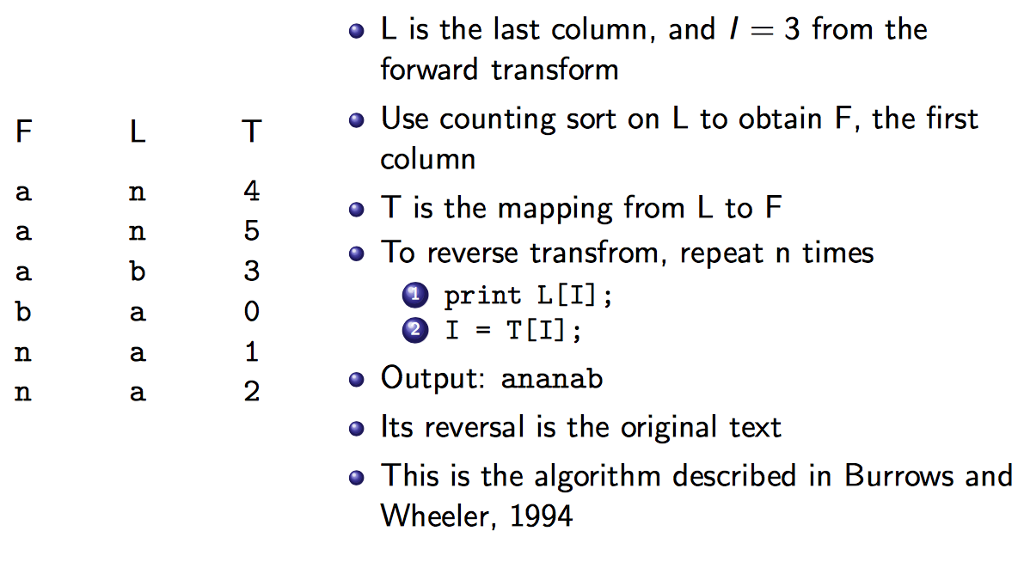Can someone help me with the following Huffman problem and burrows wheeler transformation. Below to help you is slide 27,28, 47 and 48. Please complete every problem and its sub problem clearly thank you so much!




1. The following table has the frequencies of symbols in a file, where nl and sp stand for newline and space, respectively. Symbols nl sp Frequencies 100 605 101 705 431 242 176 59 185 250 174 199 205 217 (a) Applying Huffman's algorithm to the data, draw the prefix code tree. The leaves should be annotated with the symbols and their weights, and internal nodes should be annotated with the total weights of their substrees. When merging two subtrees, put the lower- weight subtree on the right. (b) Make a table of four columns symbols, codes, frequencies, total bits, like Slide 20 of lecture notes. (c) Compress this 7-symbol text: "04: 19 Show the result in both binary and hexadecimal (d) Decompress the binary string 11001110111100000 (e) In preparation for fast decoding, sort the codes by lexicographical order like Slide 27 of lecture notes. (f) Take the top three codes after sorting, and construct the decode array for these three codes, using to skip repetitive symbols in the decode array, like Slide 28 of lecture notes. 2. Apply the Burrows Wheeler Transform on this string: "abracadabra", using the methods on Slides 47 and 48 of lecture notes. (a) Generate all rotations of the string. (b) Reorder the rotations by lexicographical order. (c) Output the last column and the index I of the original string. Note that I is zero-based. See Slide 47 (d) Write the contents of the three arrays F, L, and T. See Slide 48 1. The following table has the frequencies of symbols in a file, where nl and sp stand for newline and space, respectively. Symbols nl sp Frequencies 100 605 101 705 431 242 176 59 185 250 174 199 205 217 (a) Applying Huffman's algorithm to the data, draw the prefix code tree. The leaves should be annotated with the symbols and their weights, and internal nodes should be annotated with the total weights of their substrees. When merging two subtrees, put the lower- weight subtree on the right. (b) Make a table of four columns symbols, codes, frequencies, total bits, like Slide 20 of lecture notes. (c) Compress this 7-symbol text: "04: 19 Show the result in both binary and hexadecimal (d) Decompress the binary string 11001110111100000 (e) In preparation for fast decoding, sort the codes by lexicographical order like Slide 27 of lecture notes. (f) Take the top three codes after sorting, and construct the decode array for these three codes, using to skip repetitive symbols in the decode array, like Slide 28 of lecture notes. 2. Apply the Burrows Wheeler Transform on this string: "abracadabra", using the methods on Slides 47 and 48 of lecture notes. (a) Generate all rotations of the string. (b) Reorder the rotations by lexicographical order. (c) Output the last column and the index I of the original string. Note that I is zero-based. See Slide 47 (d) Write the contents of the three arrays F, L, and T. See Slide 48










